Across the globe, culinary traditions offer a mouth-watering array of peculiar and unique foods that may seem unusual to many but are utterly delicious once given a chance. From fermented delights to unexpected pairings, these 16 unusual foods challenge conventional palates and invite adventurous eaters to embark on a flavorful journey. Each item brings its own story, taste, and cultural significance, ready to tantalize taste buds and expand culinary horizons.
Durian
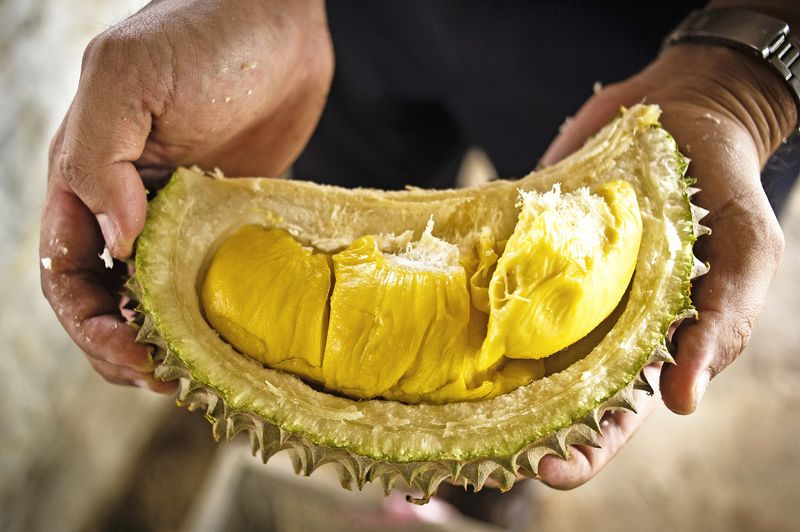
Smelly yet adored, durian is a fruit that evokes strong feelings. Known as the “king of fruits,” its pungent aroma can be off-putting to some, but its creamy texture and unique taste have won over many hearts.
In Southeast Asia, durian is celebrated not just as a fruit but as a delicacy, often paired with sticky rice or enjoyed on its own.
Though it may seem intimidating, trying durian offers a glimpse into the rich tapestry of Asian cuisine.
Century Egg
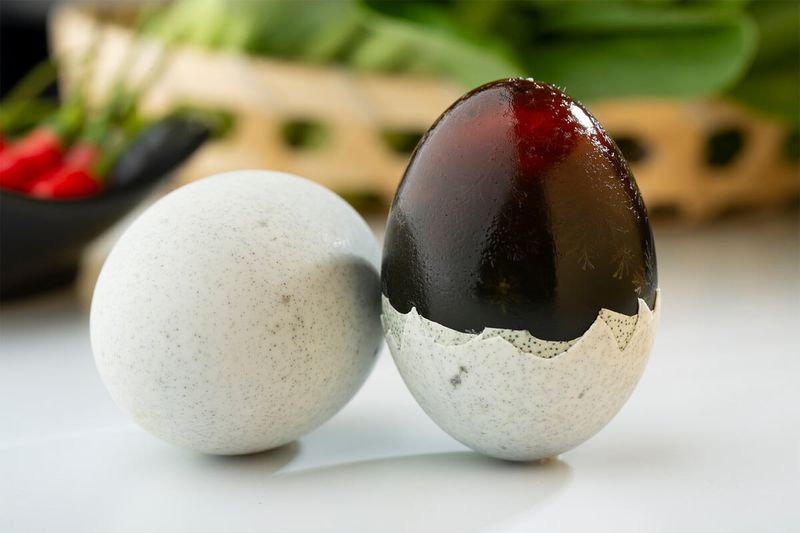
The century egg, or pidan, is a Chinese delicacy that defies expectations. Despite its dark, aged appearance, it presents a rich, savory flavor that is surprisingly mild.
Often eaten as a snack or appetizer, it pairs well with pickled ginger, creating a delightful contrast of textures and tastes.
Its transformation is a testament to the art of preservation, capturing the essence of ancient culinary traditions.
Hákarl
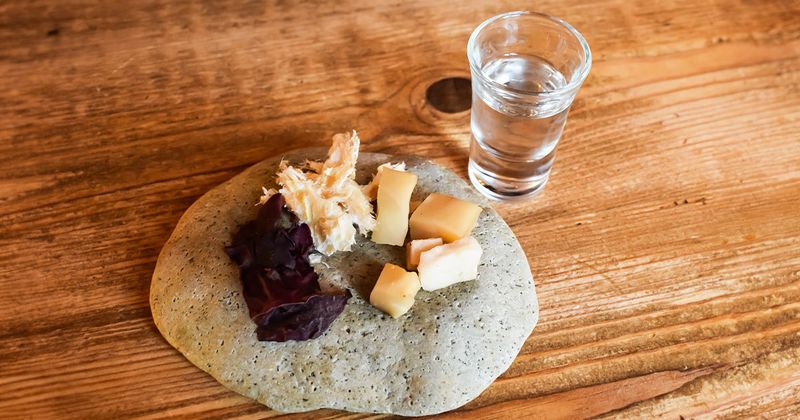
Hákarl is Iceland’s daring gift to the world of food. Fermented shark meat, it carries an intense ammonia-rich aroma, but its taste is surprisingly smooth once past the initial shock.
A staple in Icelandic tradition, hákarl is often consumed during the Þorrablót midwinter festival, embodying the resilient spirit of its people.
For those who dare, it offers an unforgettable encounter with Viking history.
Escamoles
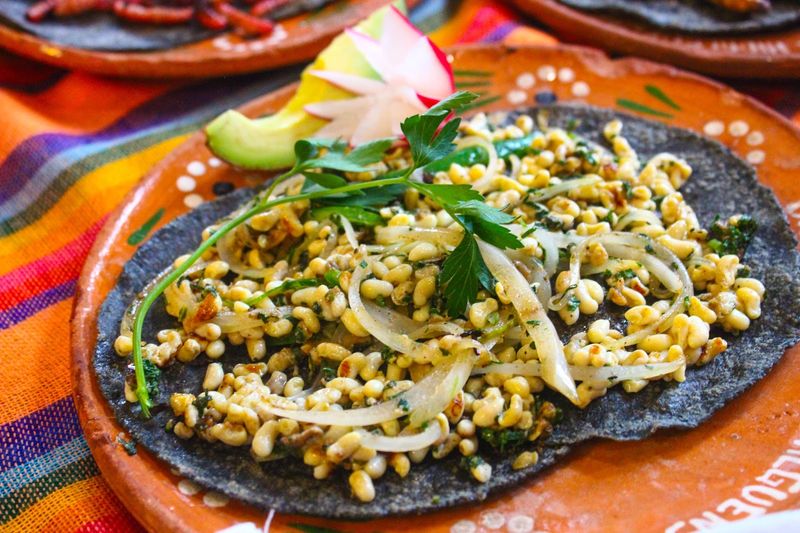
Revered in Mexican cuisine, escamoles are ant larvae with a nutty, buttery flavor. Known as “insect caviar,” they are harvested from agave plants and cooked into an exquisite delicacy.
Their rich texture makes them a versatile ingredient, often served with tortillas or atop guacamole, enhancing the dish with a unique twist.
Exploring escamoles is a venture into the sustainable and innovative side of Mexican gastronomy.
Casu Marzu

Casu Marzu, Italy’s infamous “maggot cheese,” pushes the boundaries of cheese-making. Originating from Sardinia, this sheep’s milk cheese is inhabited by live larvae that transform its texture into a creamy spread.
The cheese’s pungency is legendary, yet it is a sought-after delicacy for those willing to embrace its boldness.
Tasting Casu Marzu is more than just eating cheese; it’s an adventure into the heart of Sardinian culture.
Balut
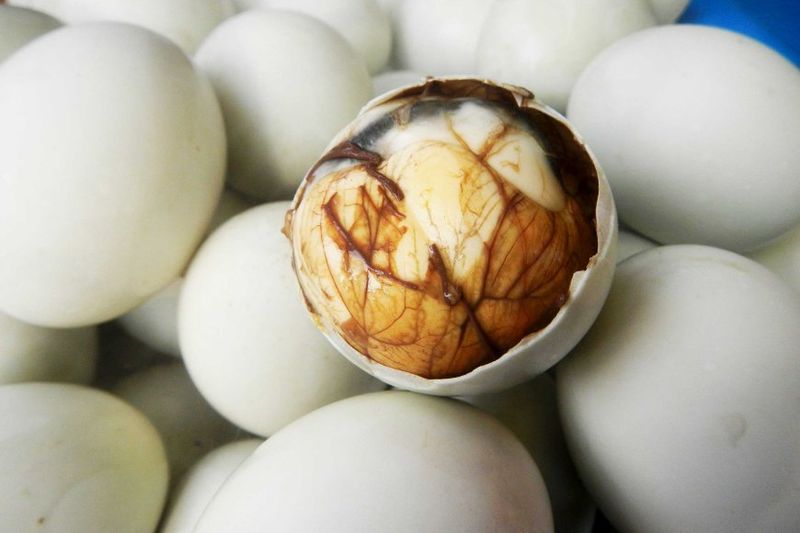
Balut, a fertilized duck egg, is a street food staple in the Philippines and Vietnam. Eaten directly from the shell, it offers a blend of flavors and textures that range from broth-like to rich and gamey.
Despite its unconventional appearance, balut is cherished for its nutritional value and considered an aphrodisiac.
It stands as a testament to the diverse and daring palate of Southeast Asian cuisines.
Surströmming
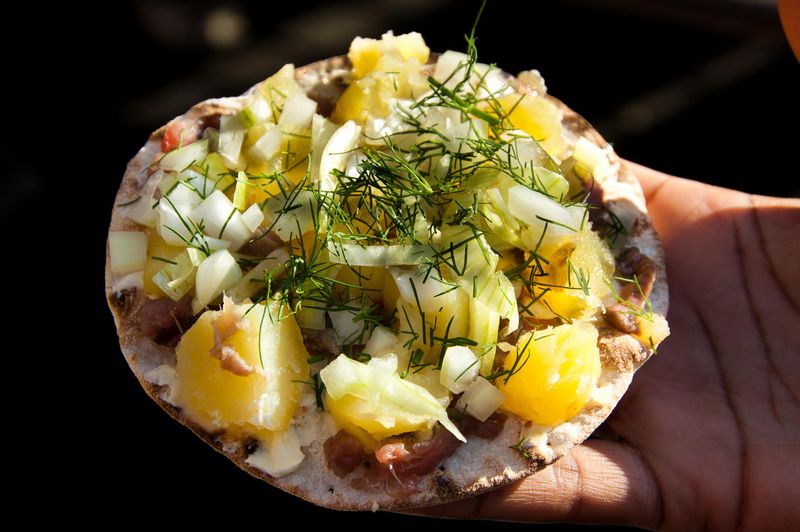
Surströmming, the Swedish fermented herring, is infamous for its potent scent. Yet beneath this olfactory challenge lies a delicacy beloved by many Swedes.
Traditionally enjoyed with thin bread, potatoes, and onions, it provides a robust, savory kick that is balanced by its accompaniments.
Sampling surströmming is a rite of passage into the heart of Swedish culinary tradition.
Huitlacoche
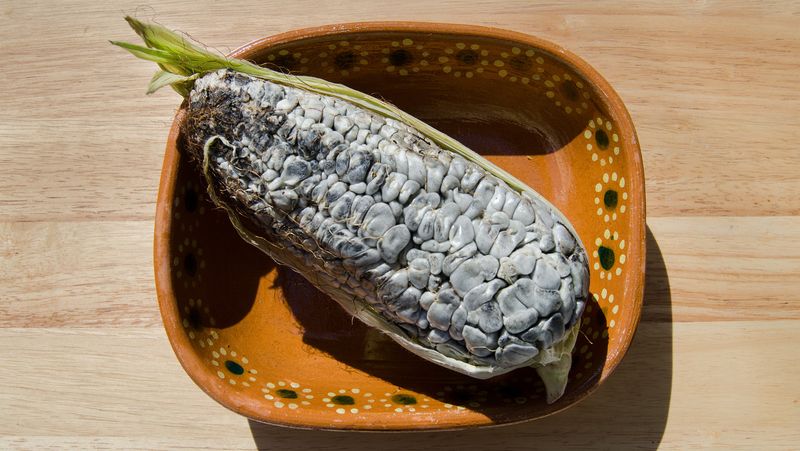
Huitlacoche, often dubbed “Mexican truffle,” is a corn fungus treasured for its earthy flavor. It transforms the humble corn into a gourmet ingredient celebrated in Mexican cuisine.
Commonly used in quesadillas and soups, it adds a rich, umami depth that elevates dishes to new heights.
This delicacy showcases the innovative spirit of turning agricultural anomalies into culinary gold.
Kangaroo Meat
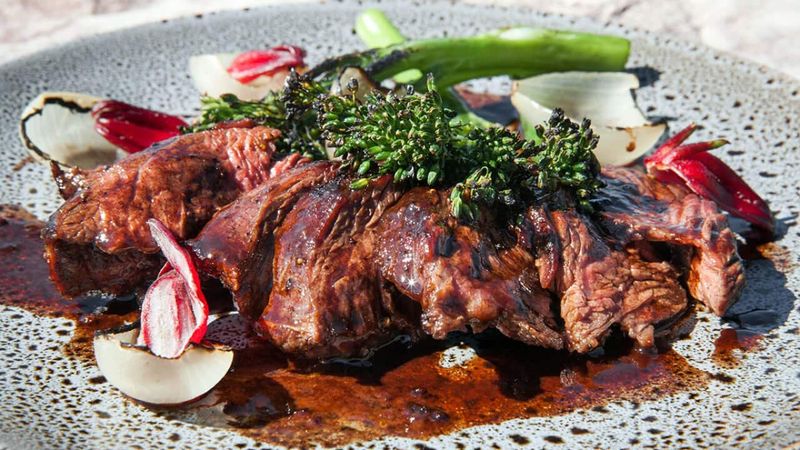
In Australia, kangaroo meat is a lean, protein-rich alternative to traditional meats. Its gamey flavor is complemented by its tender texture, making it a favorite among food enthusiasts.
Environmentally friendly, kangaroo is a sustainable choice, often paired with indigenous herbs and spices for a true taste of the outback.
Embracing kangaroo on your plate is a nod to both culinary innovation and ecological mindfulness.
Fugu
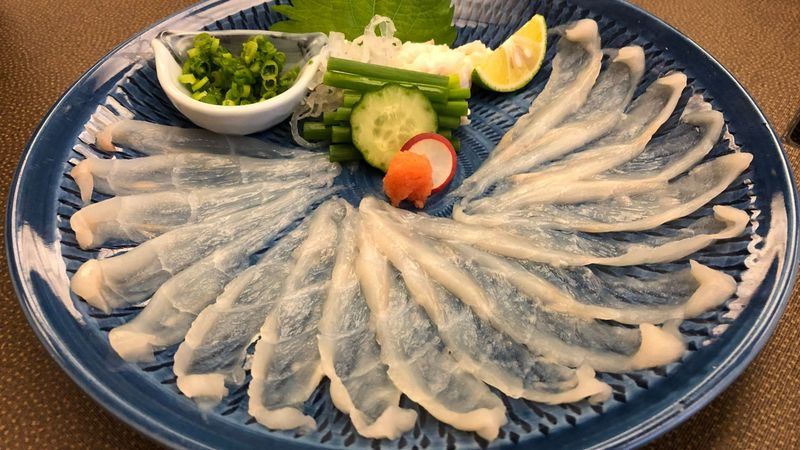
Fugu, or pufferfish, is Japan’s notorious delicacy. Prepared by licensed chefs, this fish can be lethal if not handled correctly, yet its taste and thrill make it an exquisite experience.
The subtle, refined flavor of fugu is often compared to the mildness of chicken, but it’s the daring nature of consumption that intrigues gourmands.
Trying fugu is an adventurous dive into the artistry and precision of Japanese culinary craft.
Kopi Luwak
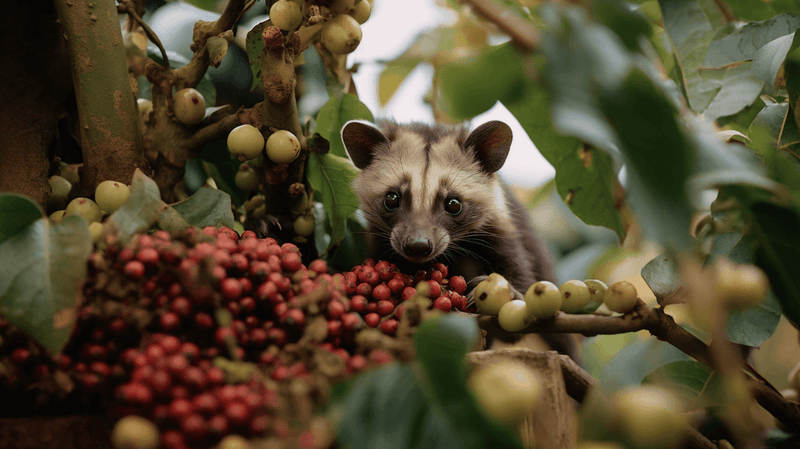
Kopi Luwak, the world’s most expensive coffee, involves beans processed by civets. These creatures eat the coffee cherries, and their digestive process enhances the beans’ flavor profile.
The resulting coffee is smooth, with a unique richness and lack of bitterness that captivates coffee lovers worldwide.
Exploring Kopi Luwak is not just about taste; it’s an immersion into the intriguing intersections of nature and gourmet craftsmanship.
Tuna Eyeballs
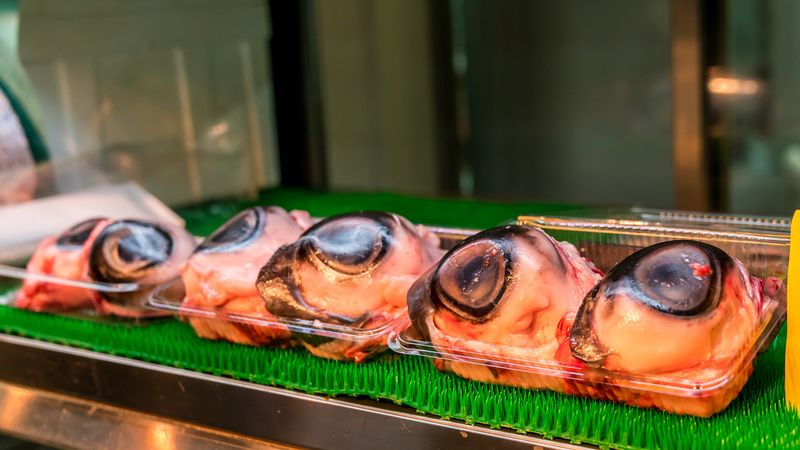
In Japan, tuna eyeballs are a surprisingly popular delicacy. Cooked with soy sauce and mirin, they offer a taste akin to squid, with a gelatinous texture that intrigues adventurous eaters.
Rich in omega-3s, they are not only flavorful but also nutritious, showcasing the Japanese philosophy of minimizing waste.
Sampling tuna eyeballs is a step into the unexpected, where ordinary turns into extraordinary culinary exploration.
Fried Tarantulas
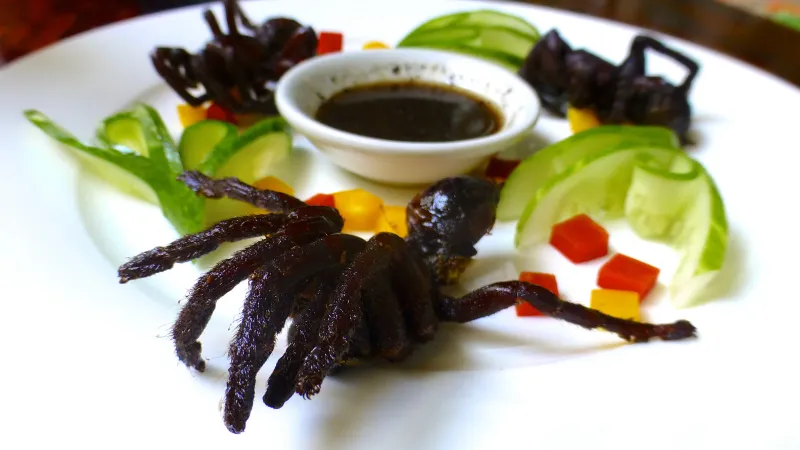
In Cambodia, fried tarantulas are a crunchy snack that defies convention. These arachnids are seasoned and deep-fried to a crisp, offering a taste reminiscent of crab.
This unusual dish is a testament to human creativity in food, turning fear into flavor.
Eating fried tarantulas is not for the faint-hearted but promises a story worth sharing.
Smalahove
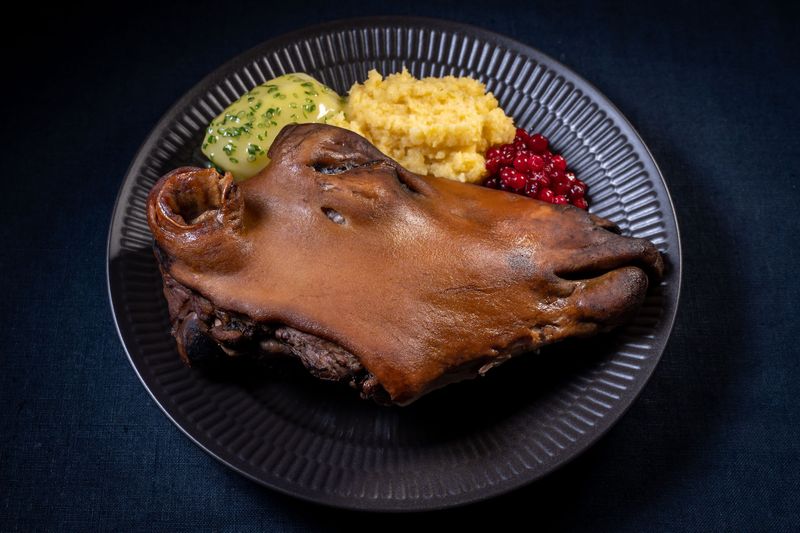
Smalahove, a Norwegian dish made from sheep’s head, is not just food but a cultural legacy. Traditionally served during Christmas, its preparation involves careful curing and cooking.
Despite its startling appearance, it offers a rich, savory taste that embodies Norwegian farmhouse cuisine.
Smalahove invites diners to experience the hearty, historic flavors of Norway.
Jellied Moose Nose
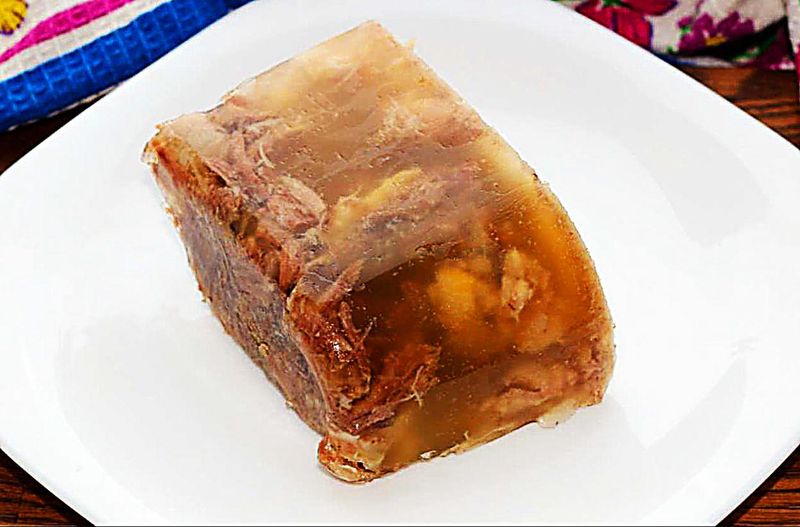
A Canadian curiosity, jellied moose nose is a dish that surprises with its jelly-like texture and mild flavor. Prepared by boiling and cooling, it captures the essence of traditional rural Canadian cooking.
Served cold, it’s often accompanied by pickles, creating a harmonious blend of flavors that honor the land’s bounty.
Trying this dish is an invitation to explore Canada’s unique culinary traditions.
Salmiakki
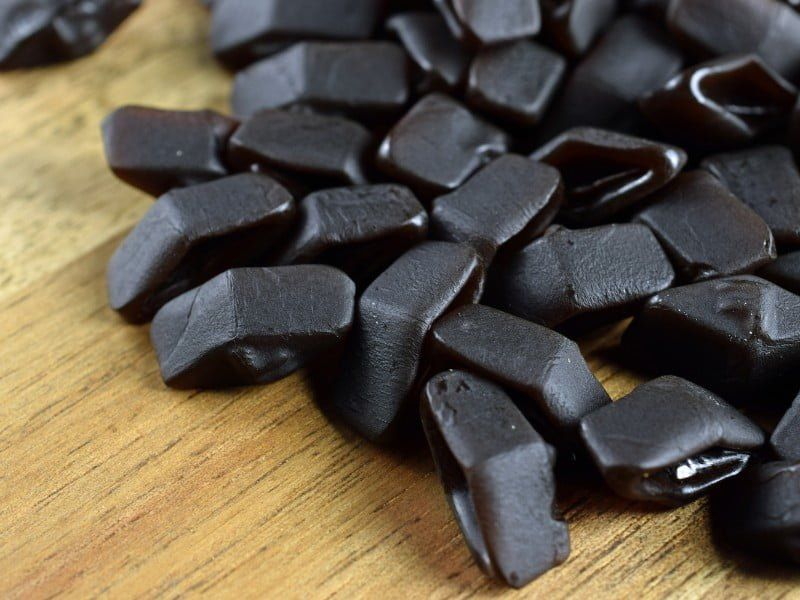
Have you ever tasted something that challenged your expectations? Salmiakki, the Finnish salty licorice, is just that. Its bold, salty flavor is an acquired taste, beloved by Finns. Imagine the sea’s brine meeting the sweetness of candy – that’s Salmiakki.
This treat might surprise newcomers with its intense taste, but it holds a special place in Nordic hearts. Enjoyed as candy or in ice creams and liqueurs, it represents the unique palate of the region.
Fun fact: It’s so popular in Finland that many gift shops sell Salmiakki-flavored souvenirs, from chocolates to vodka!
Leave a comment